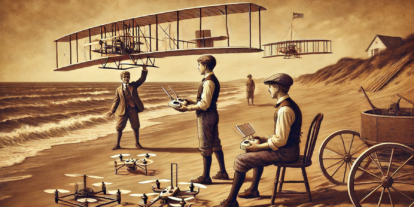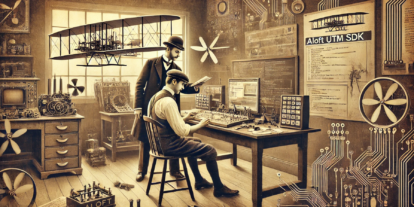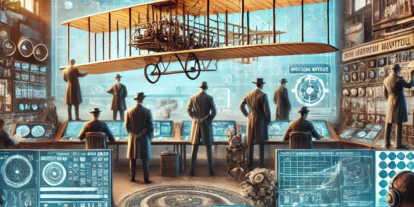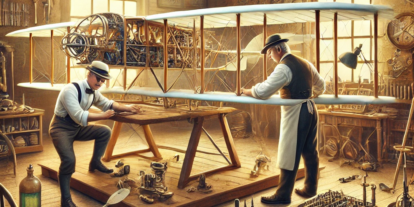May 22 is an important day in aviation history. It’s also an important day in legal history. In 1906, the Wright Brothers were granted the patent on a flying machine, and in doing so, fired the first shot in one of the longest and detrimental aviation legal fights in history. The legal ramifications of how to enforce this patent would travel across oceans, hinder war efforts and even outlive one of the patent holders.
When the Wright’s developed their flying machine, they maneuvered it by warping the wings, using a front mounted elevator and a rudder to keep the turns coordinated. This was a revolutionary approach that combined the best possible information about aerodynamics and control systems at the time. It was the kind of work you would want to patent. And patent they did.
Orville and Wilbur were scrappy engineers and shrewd businessmen. They knew that vigorously defending their patent was going to help them continue to build their fortune and dominate the rapidly burgeoning field of aviation. They sued just about anyone that had inflight control of a flying machine — and often times won. At least in a court of law. The court of public opinion was not as kind to the brothers. It was rumored that fellow aviators frequently said, “If someone were to jump in the air and wave their arms, they’d hear from the Wright’s lawyer.”
For a time, the Wrights were able to help stave off competitors in the United States. Unfortunately for them, innovation kept happening abroad. Even stateside, the old adage “Constraint breeds creativity.” held true. The French in particular had some ideas about how to get around wing warping. They called it the “aileron” … or little wing. These moveable flaps gave the pilot of the aircraft lateral control without the need for wing warping — the most contentious part of the patent. Innovation wasn’t going to be held back because of a legal battle. It marched on in far off corners of the world.
The patent wars continued even as real war broke out. Famously, American Pilots had to fly European aircraft in World War 1 because American innovation had spent far more time drawing up legal documents than new aircraft designs. The Wright’s were suffocating the industry they created.
By 1915, just 12 years after their first flight, almost every single new aircraft designed was using ailerons rather than wing warping for control. The Wrights had made their money and either died or retired, the lawyers had made their money, but now Europe was far ahead in designing superior aircraft. The damage had been done.
We’re in a unique place in the drone industry. In many ways, we’re at a similar cross roads. Innovation is outpacing regulation and globalization is insuring that the most nimble executors are being rewarded in the market place.
As we approach the next phase of this industry and undertake the broad implementation of a UTM system, it’s more imperative than ever to insure interoperability by baking it in from the start and even more importantly, creating that interoperability on open standards. Like the internet, the UTM system is going to get more useful and robust as there are more providers utilizing it. It’s going to require competing companies to “peer” with each other, and above all, continue to collaborate on the system going forward.
At Kittyhawk, we’re paying close attention everyday for ways to make our UTM offerings more robust in the larger UTM ecosystem. A good analogy for the problem at hand is a cell phone that can only make calls to it’s own carrier. What good is a cell phone that can only call another person on the same carrier? Imagine a wedding toast in that world, “All of this almost didn’t happen because my beautiful wife refused to switch to my cell phone carrier — So I switched to hers.”
There’s so much more opportunity when private industry is able to effectively collaborate. As was oft quoted to me in school, those that don’t study history are doomed to repeat it. A “winner take all” system isn’t going to serve the public or the industry as well as robust standards. Remember that Southwest and United fly into the same airports. Delta and American all talk to the same air traffic controllers. Common standards and open use are the bedrock of creating a sustainable ecosystem for our industry both domestically and abroad.
Joshua Ziering
Joshua is the Founder and Chief Security Officer of Aloft (formerly Kittyhawk), the market leader in drone airspace systems & UTM technologies. He is also a Part 61 certificated private pilot, a founding member of the FAA's Drone Safety Team, and an FAA Part 107 certificate holder.



